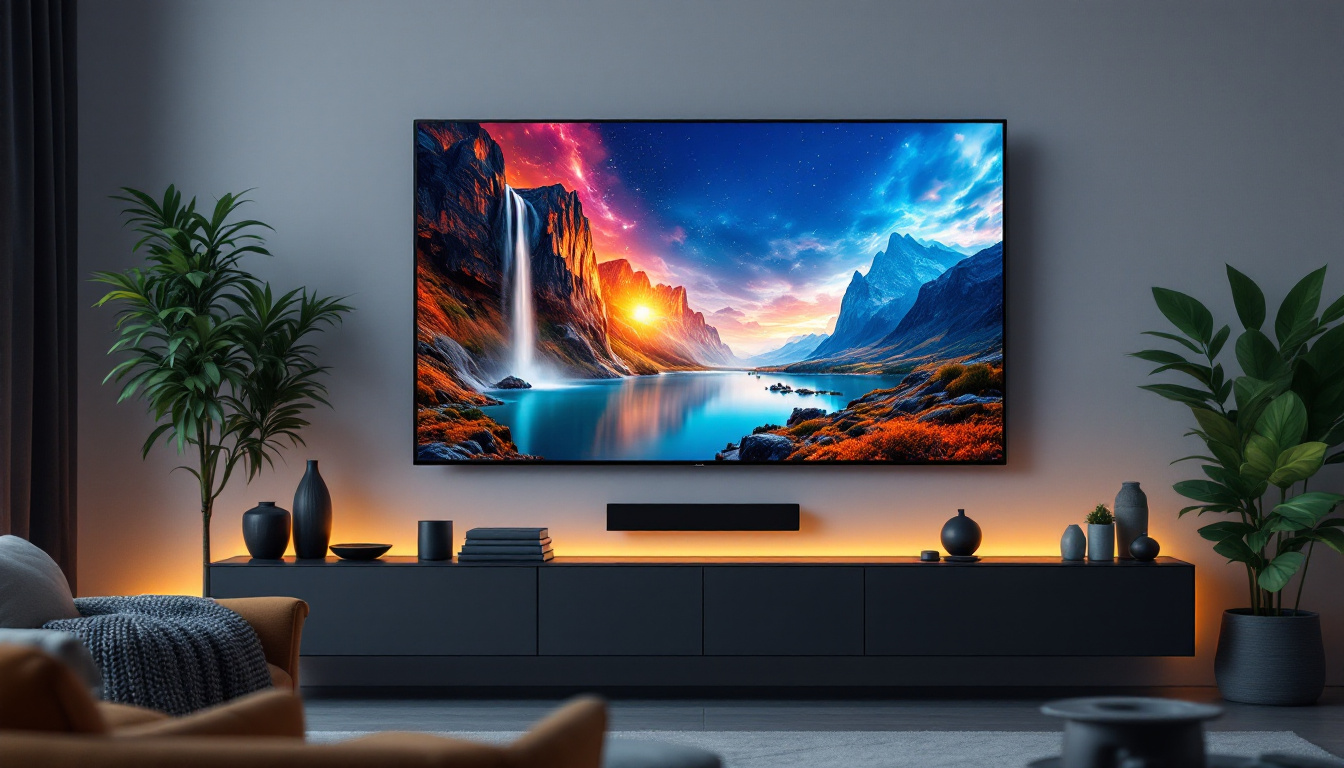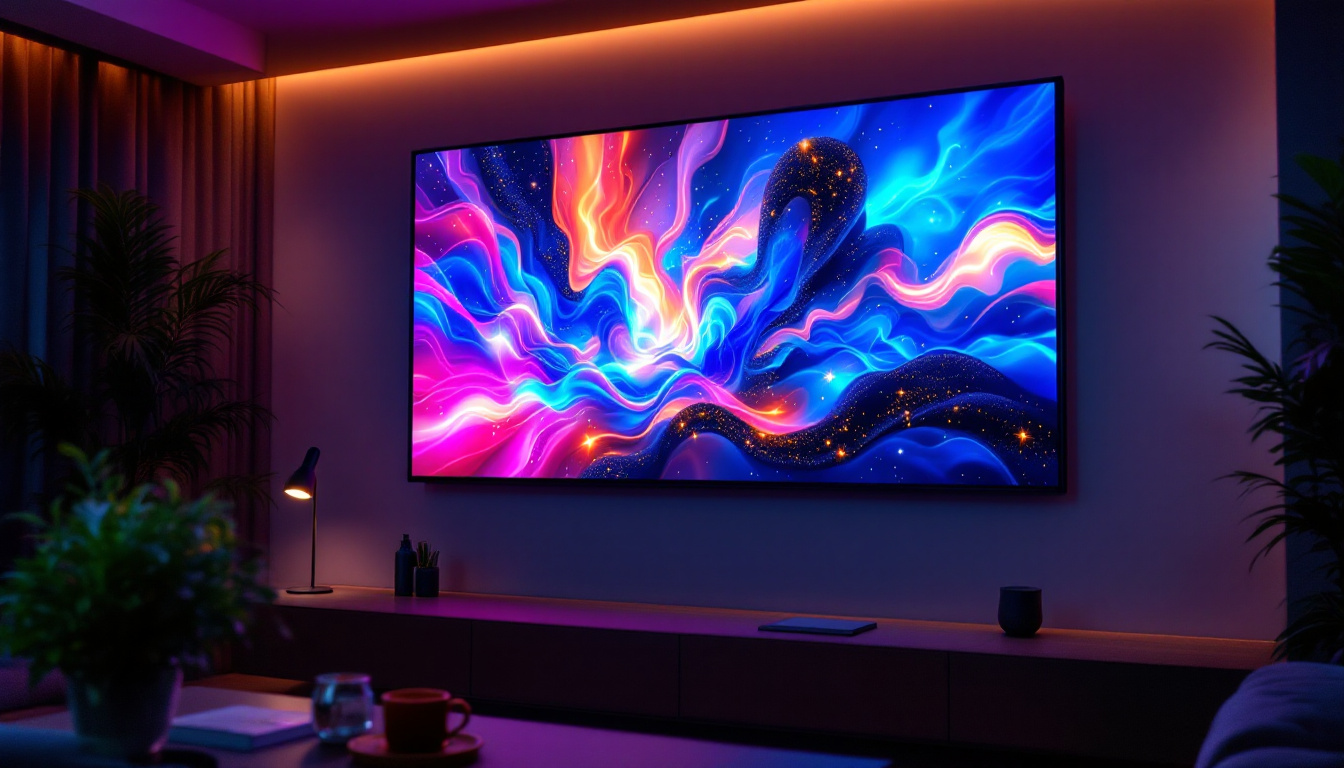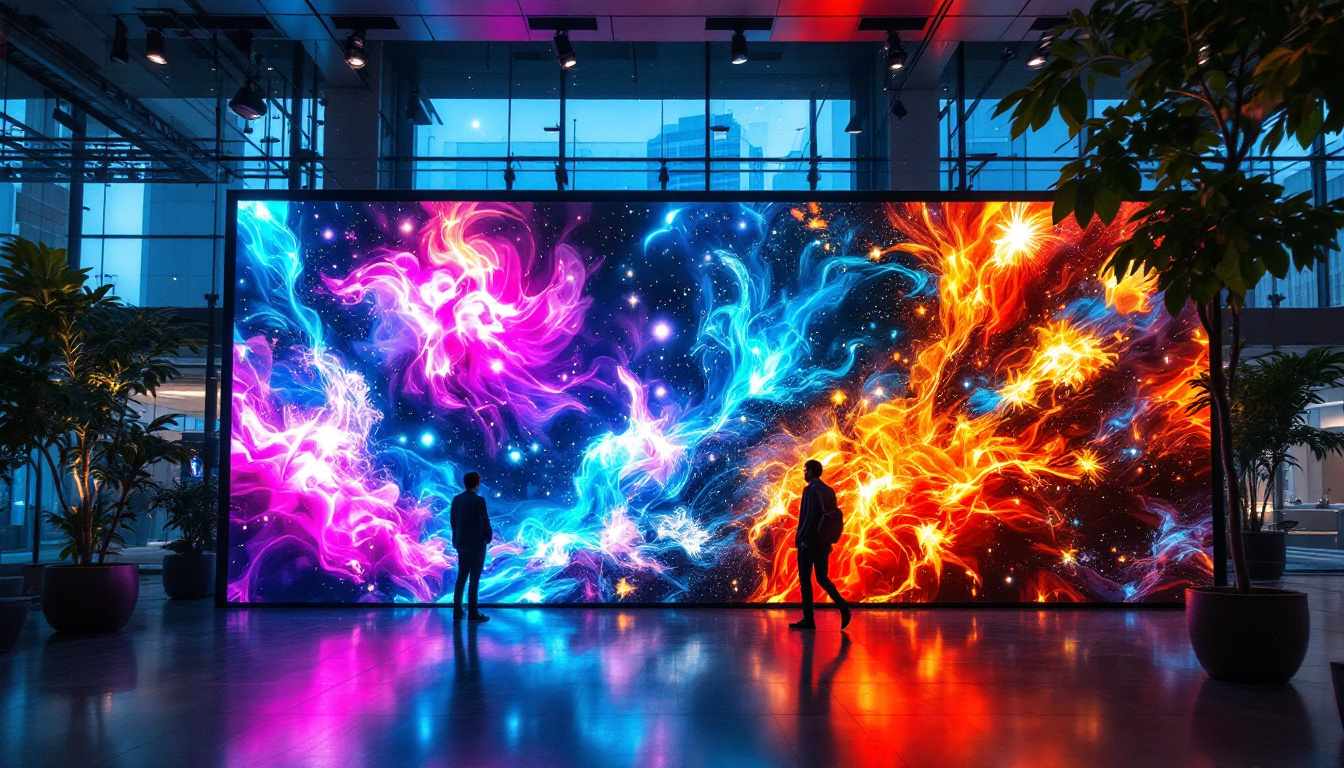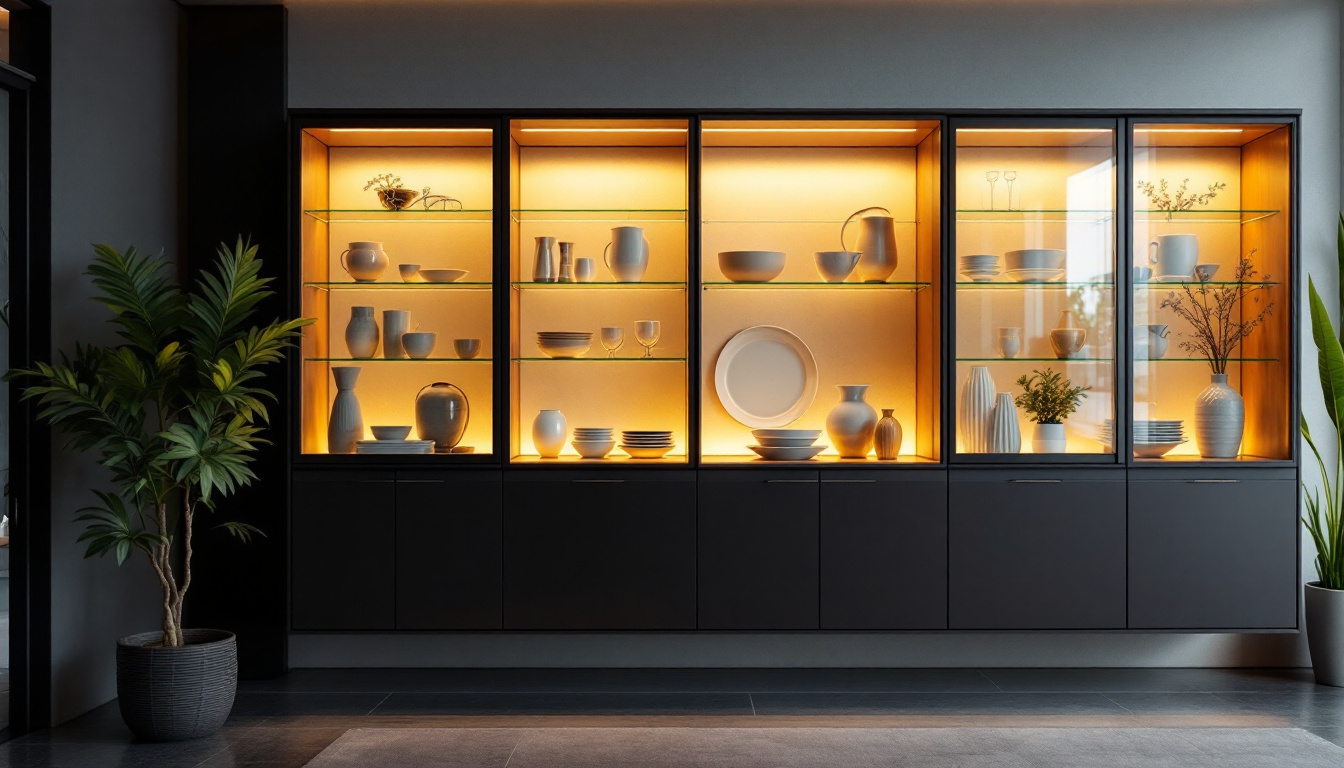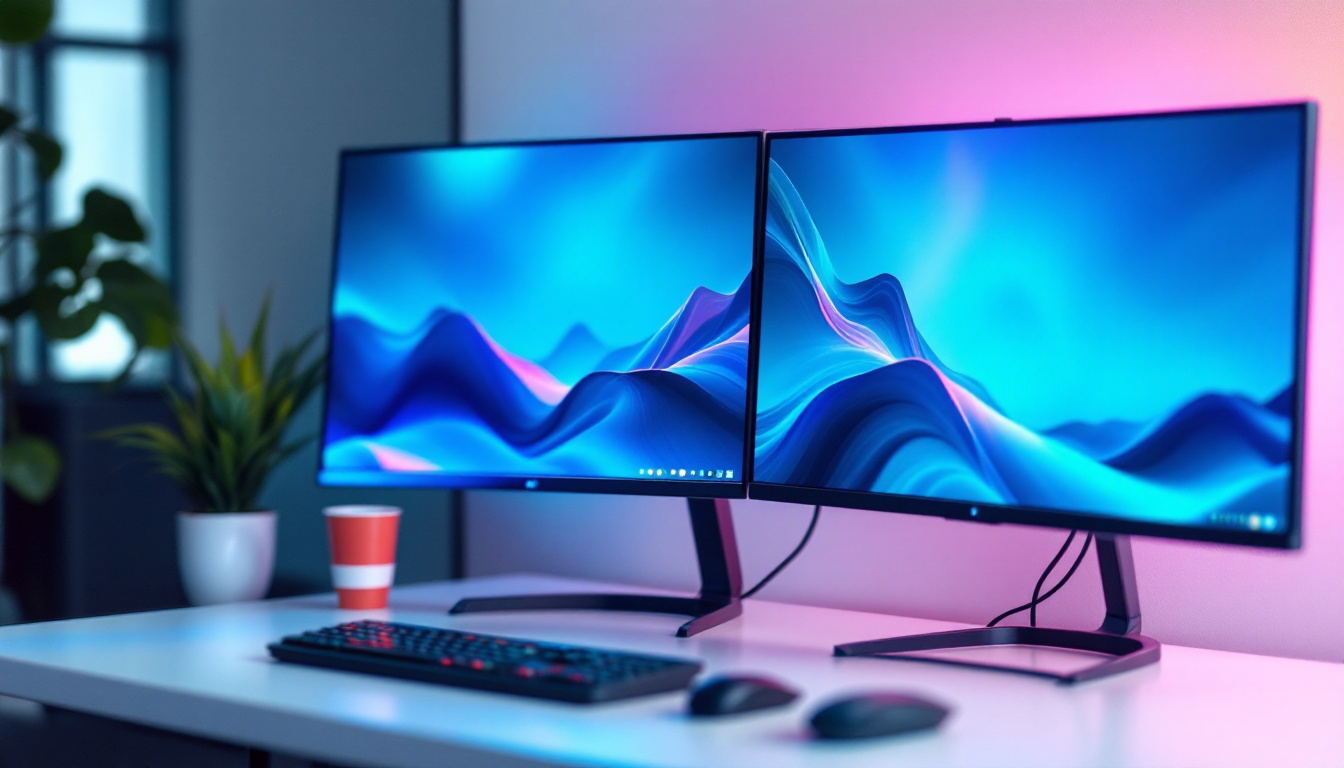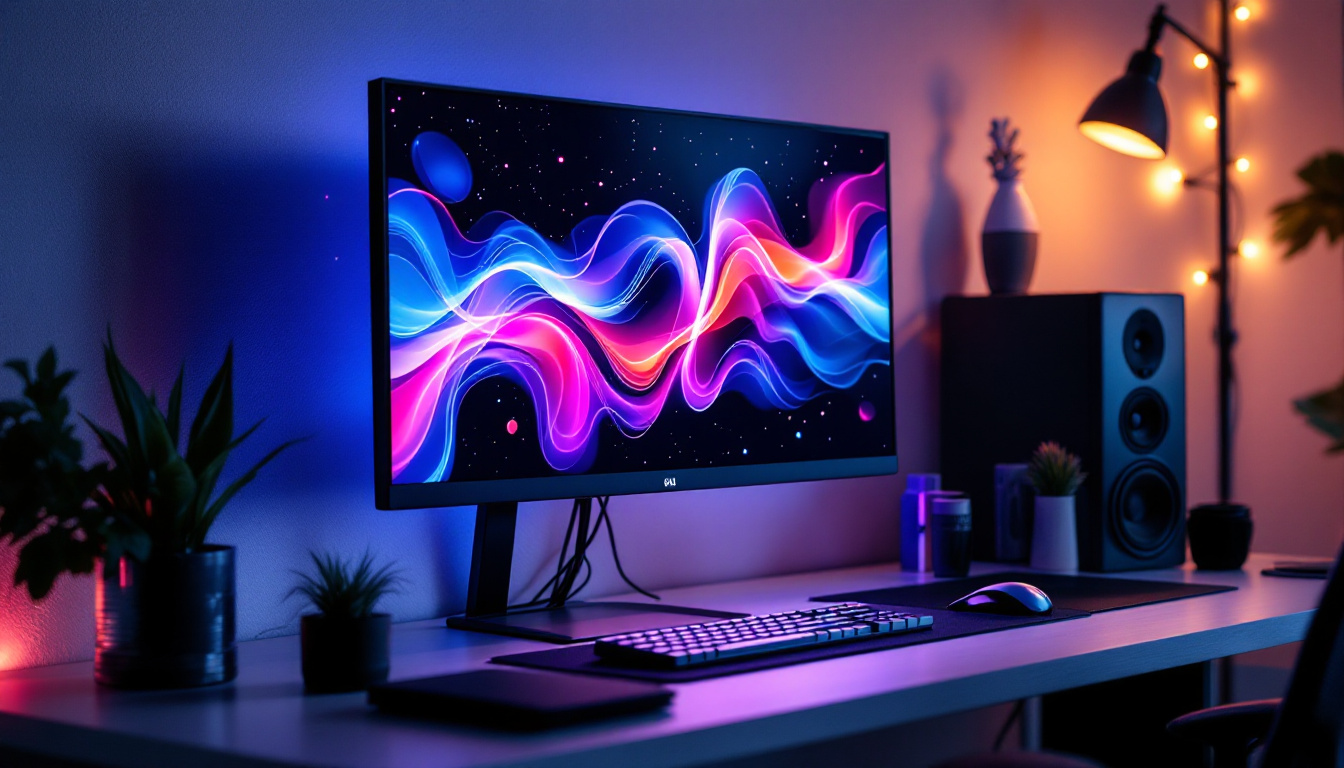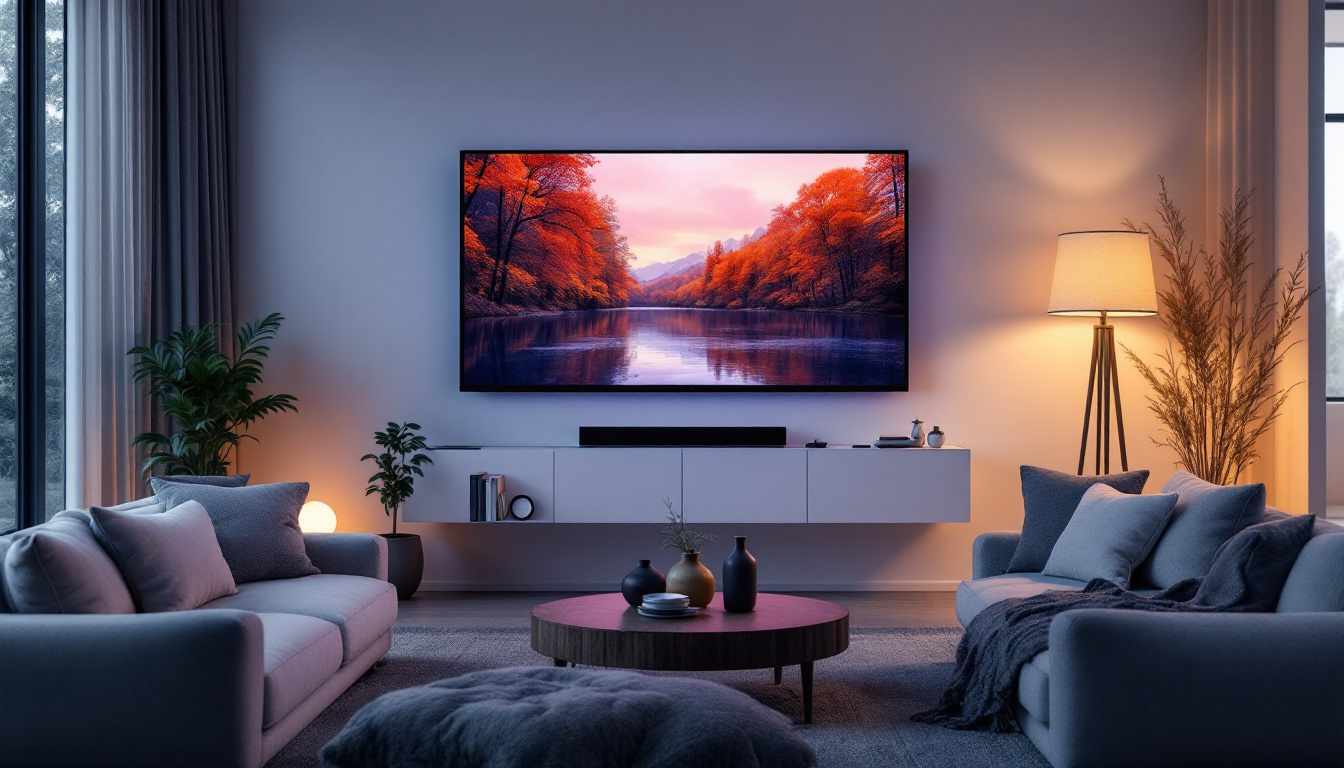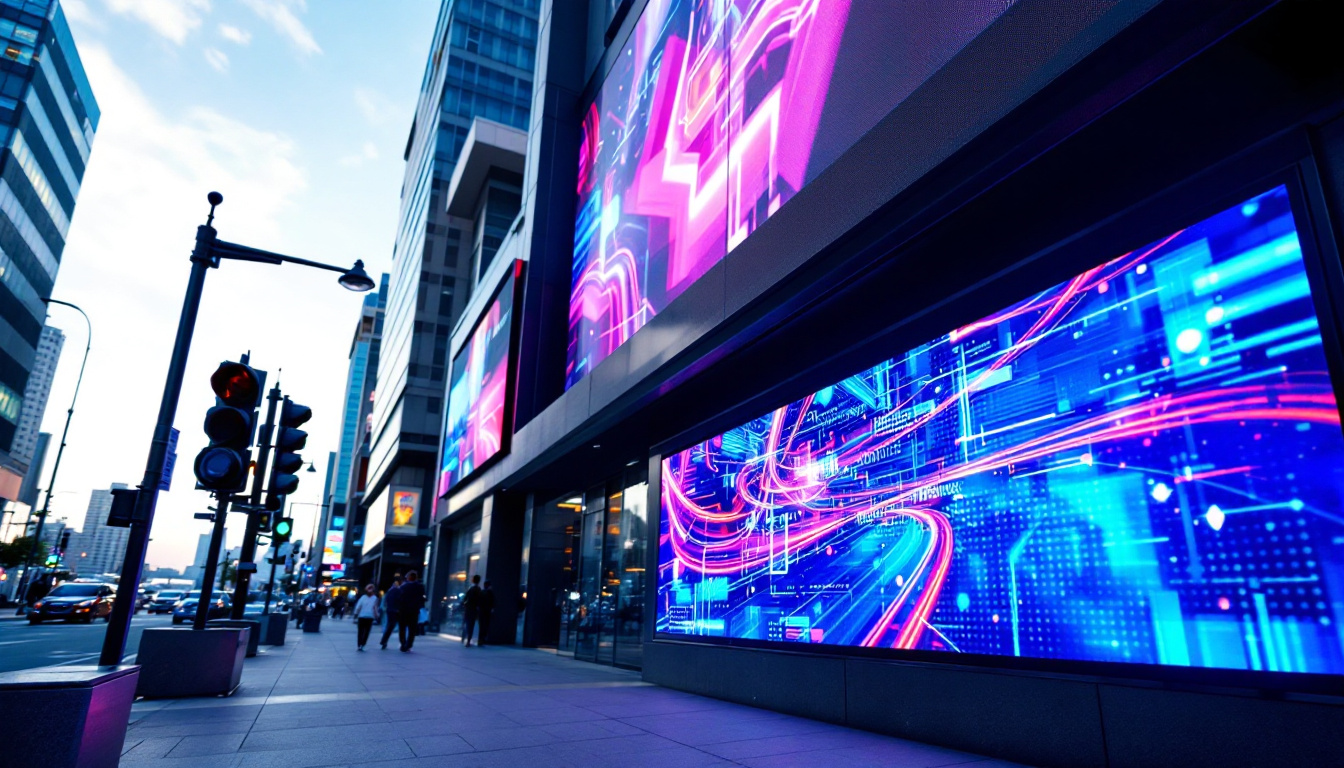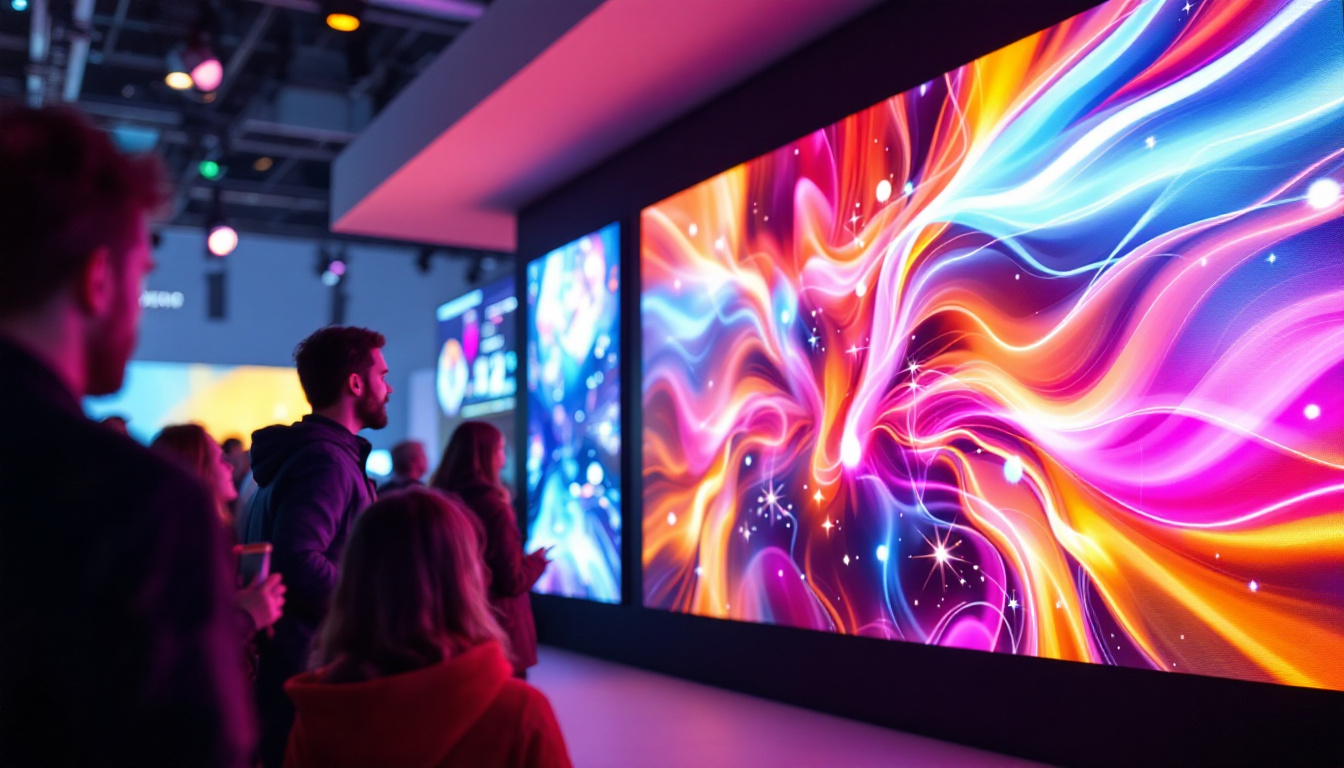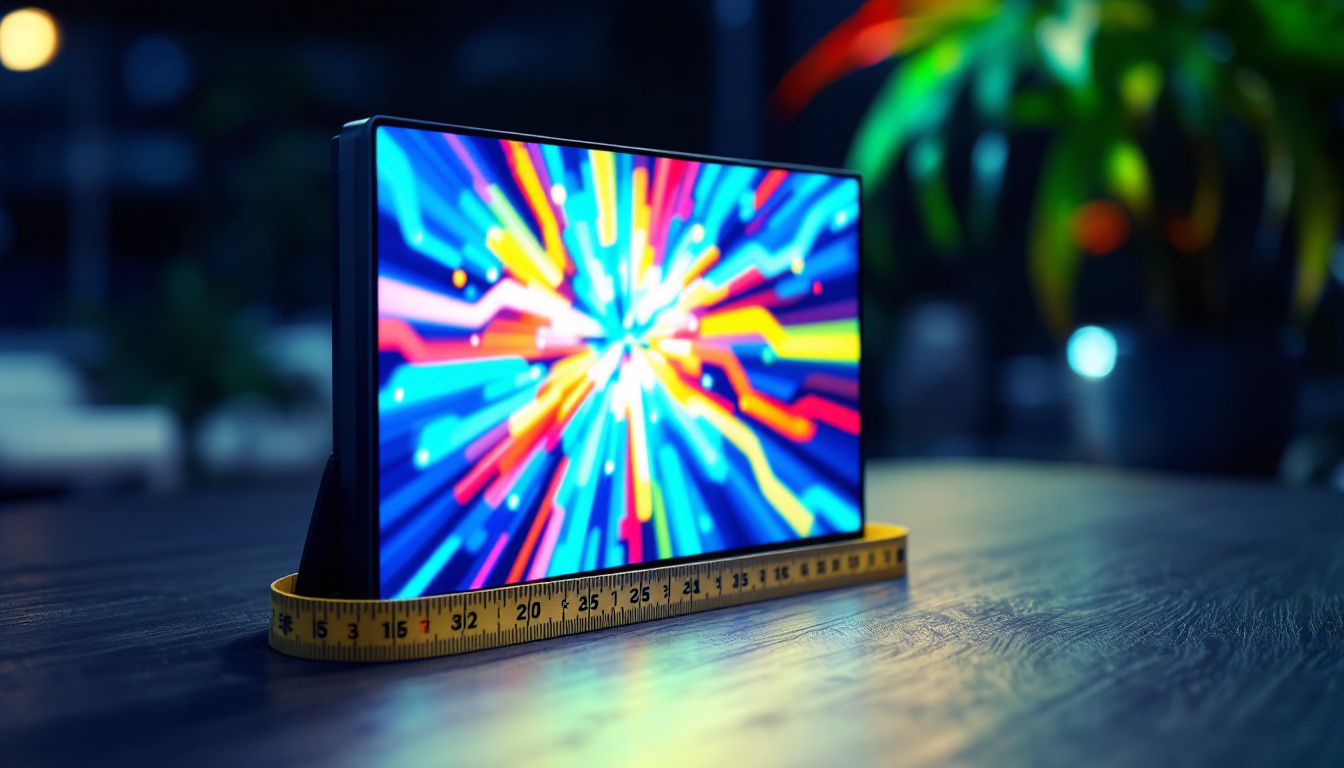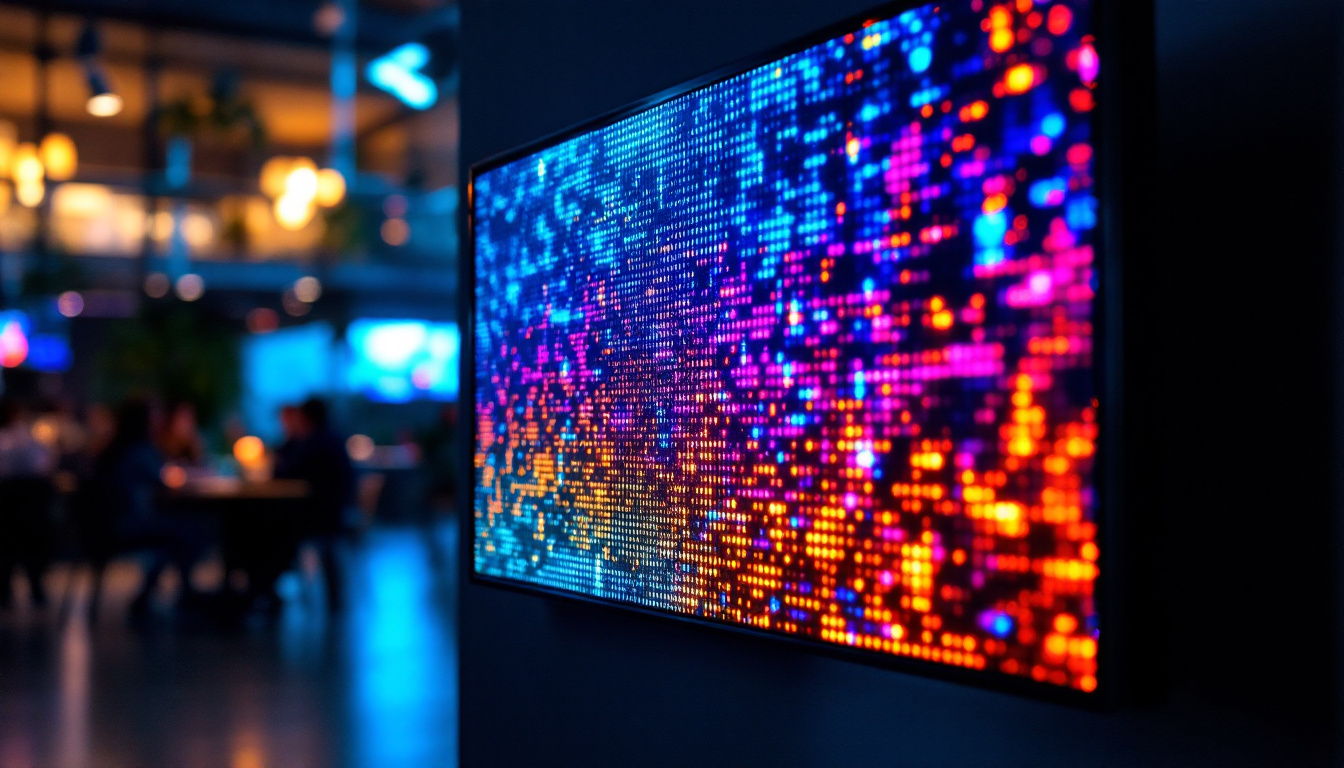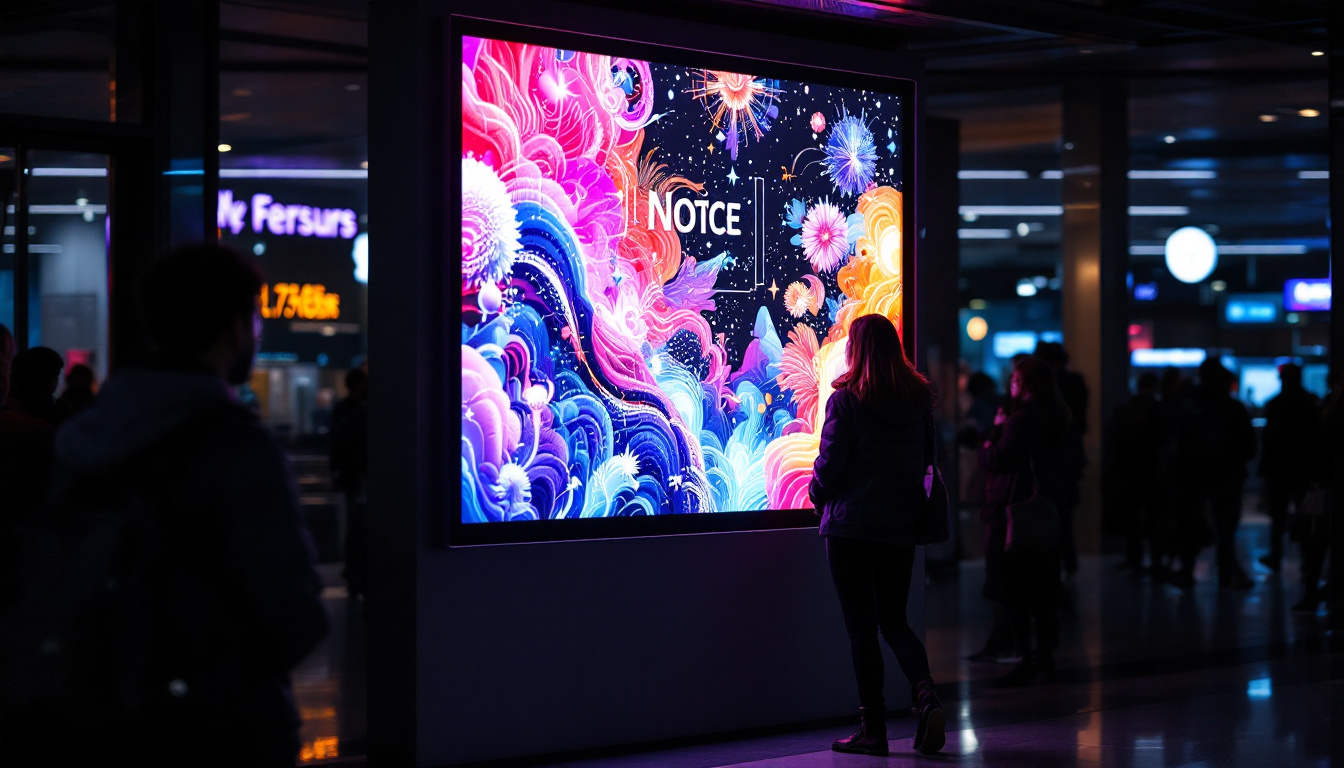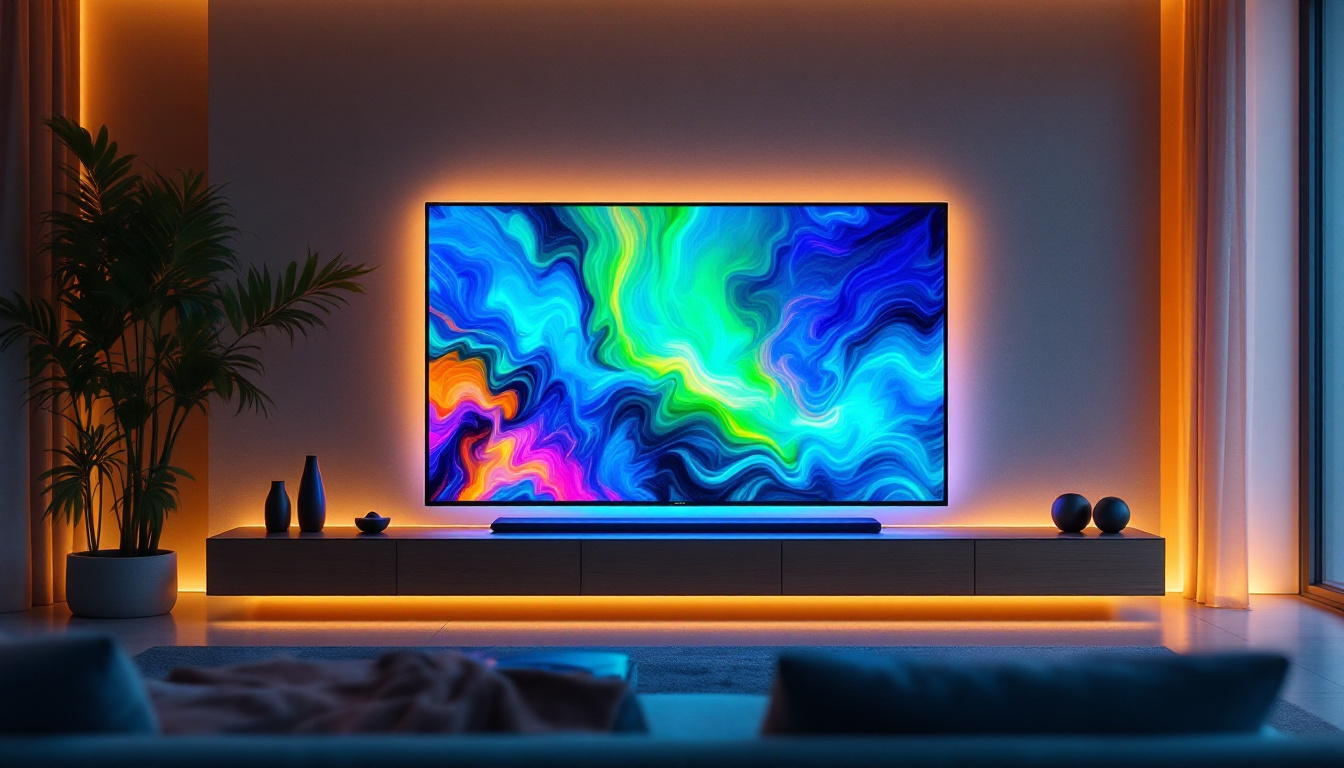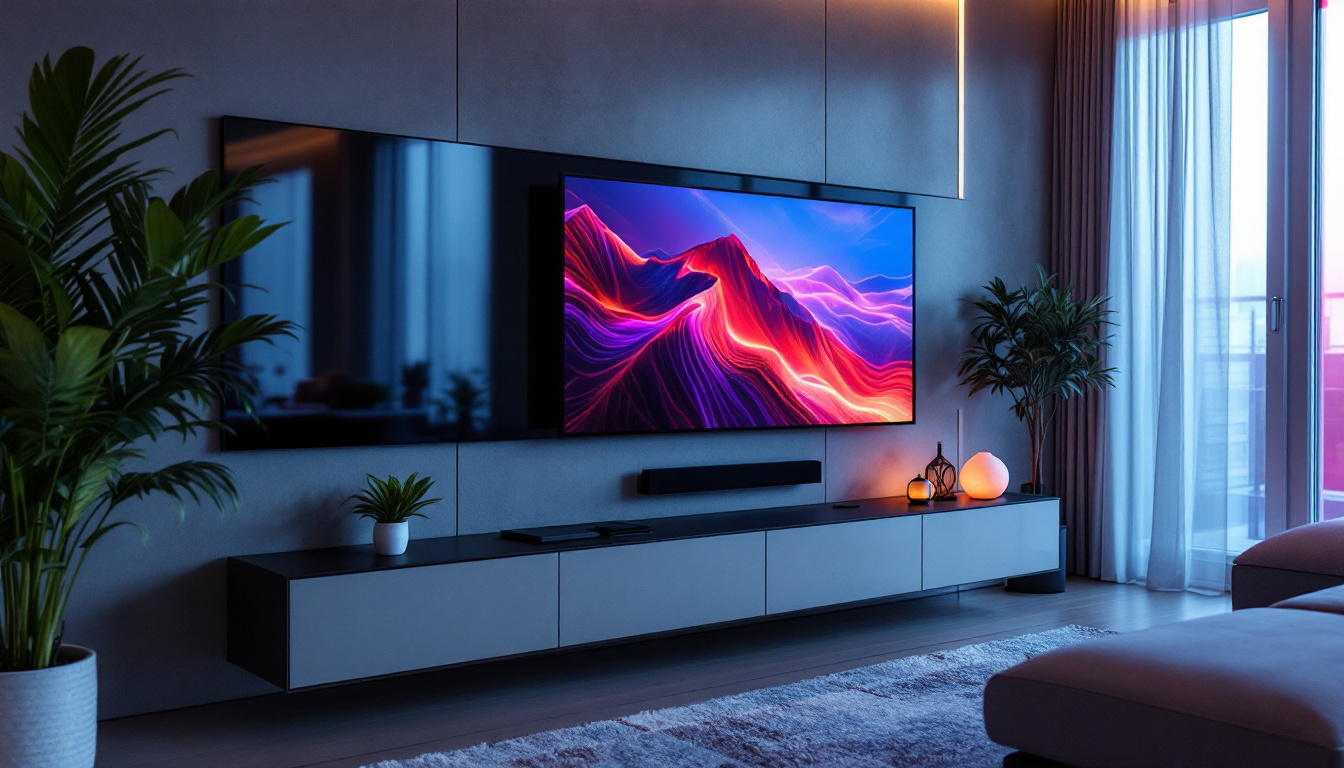Wall Smart TV: LED Display Explained
The evolution of television technology has been remarkable over the past few decades. Among the various innovations, the introduction of LED displays has transformed how viewers experience their favorite shows and movies. This article delves into the intricacies of LED displays, particularly in the context of wall-mounted smart TVs, exploring their features, benefits, and the technology behind them.
Understanding LED Technology
Light Emitting Diode (LED) technology has become synonymous with modern television displays. Unlike traditional cathode ray tube (CRT) televisions, LED TVs utilize a series of tiny diodes to produce light and create images on the screen. This technology not only enhances picture quality but also contributes to energy efficiency. The transition from CRT to LED technology has revolutionized the viewing experience, allowing for thinner screens and the ability to produce sharper images with vibrant colors that captivate audiences.
How LED Displays Work
At the core of LED technology is the principle of electroluminescence, where certain materials emit light when an electric current passes through them. In LED TVs, these diodes are arranged in a grid, forming a matrix that lights up to display images. There are two primary types of LED displays: edge-lit and backlit.
Edge-lit LED TVs have LEDs positioned along the edges of the screen, which creates a more slender design. However, this configuration may lead to uneven brightness in some cases. On the other hand, backlit LED TVs feature a grid of LEDs behind the screen, providing more uniform brightness and superior contrast. This is particularly beneficial for watching content in dimly lit environments. The advancements in dimming technology, such as local dimming, further enhance the viewing experience by allowing specific areas of the screen to darken while others remain bright, resulting in deeper blacks and more vivid colors.
Benefits of LED Displays
LED displays offer numerous advantages over their predecessors. One of the most significant benefits is energy efficiency. LED TVs consume less power compared to older technologies, making them a more environmentally friendly choice. Additionally, they have a longer lifespan, reducing the frequency of replacements. This longevity not only saves consumers money in the long run but also minimizes electronic waste, contributing to a more sustainable future.
Picture quality is another area where LED displays excel. With higher brightness levels, improved color accuracy, and better contrast ratios, viewers can enjoy a more immersive experience. This is especially important for wall-mounted smart TVs, where the display is often the focal point of a room. Furthermore, many LED TVs now incorporate advanced technologies such as HDR (High Dynamic Range), which expands the range of colors and brightness levels, allowing for a more dynamic and lifelike viewing experience. As streaming services increasingly offer HDR content, having a compatible LED TV can significantly enhance the enjoyment of movies and shows, making every scene pop with detail and vibrancy.
Smart TV Features
In addition to LED technology, the integration of smart features has revolutionized the television landscape. Smart TVs are equipped with internet connectivity, allowing users to stream content from various platforms, browse the web, and even control smart home devices.
Streaming and Content Accessibility
The ability to access streaming services such as Netflix, Hulu, and Amazon Prime Video directly from a wall-mounted smart TV has changed how viewers consume media. No longer restricted to traditional cable subscriptions, users can curate their viewing experience with a few clicks.
Moreover, many smart TVs come with built-in voice assistants, enabling users to search for content, adjust settings, or control other devices using voice commands. This hands-free convenience enhances the overall user experience, making it easier to enjoy favorite shows and movies. Some models even feature personalized recommendations based on viewing habits, making it simple to discover new content that aligns with individual preferences. This level of customization not only enriches the viewing experience but also keeps users engaged with a diverse array of programming options.
Connectivity and Integration
Smart TVs typically feature multiple connectivity options, including HDMI, USB, and wireless capabilities. This allows users to connect various devices, such as gaming consoles, sound systems, and external storage, creating a comprehensive entertainment setup.
Furthermore, with the rise of smart home technology, wall-mounted smart TVs can serve as a central hub for controlling other smart devices. Whether adjusting lighting, managing security cameras, or controlling thermostats, the integration of smart features makes these TVs versatile tools for modern living. Additionally, many smart TVs support screen mirroring, allowing users to display content from their smartphones or tablets directly on the TV screen. This feature is particularly useful for sharing photos, videos, and presentations during gatherings, enhancing social interactions and making entertainment more communal. As technology continues to evolve, the potential for smart TVs to integrate even more seamlessly with our daily lives seems limitless.
Design Considerations for Wall-Mounted Smart TVs
When it comes to wall-mounted smart TVs, design plays a crucial role in both aesthetics and functionality. The placement and mounting of the TV can significantly impact the viewing experience and the overall look of the room.
Choosing the Right Size
One of the first considerations when selecting a wall-mounted smart TV is size. The ideal screen size depends on the room’s dimensions and the distance from which viewers will watch. A general guideline is to choose a screen that is approximately one-third the distance from the viewer to the screen. For example, if the viewing distance is 8 feet, a 65-inch TV would be suitable.
Additionally, larger screens can create a more immersive viewing experience, particularly for movies and gaming. However, it’s essential to strike a balance between size and available wall space to avoid overwhelming the room’s design.
Mounting Options
There are various mounting options available for wall-mounted smart TVs, each offering different benefits. Fixed mounts provide a sleek, low-profile look but limit the ability to adjust the viewing angle. Tilting mounts allow for slight adjustments, making them ideal for elevated placements.
Full-motion mounts offer the most flexibility, enabling users to swivel and tilt the TV for optimal viewing from different angles. This is particularly useful in multi-purpose rooms where seating arrangements may vary. Regardless of the chosen mount, ensuring proper installation is crucial for safety and stability.
Maintaining Your Wall-Mounted Smart TV
To ensure longevity and optimal performance, regular maintenance of wall-mounted smart TVs is essential. This involves both cleaning the screen and managing the software updates that enhance functionality.
Cleaning and Care
Cleaning the screen of a wall-mounted smart TV should be done with care to avoid damage. Using a microfiber cloth is recommended, as it effectively removes dust and fingerprints without scratching the surface. For stubborn smudges, a mixture of water and vinegar can be used, but it’s important to apply it to the cloth rather than directly on the screen.
Additionally, maintaining the surrounding area free from dust and debris can help keep the TV in good condition. Regularly checking the mount for stability is also advisable, especially if the TV has been moved or adjusted.
Software Updates
Smart TVs require periodic software updates to ensure they run smoothly and securely. These updates often include new features, performance improvements, and security patches. Most smart TVs will notify users when an update is available, but it’s a good practice to check for updates regularly to keep the system optimized.
Enabling automatic updates can simplify this process, ensuring that the TV remains up to date without requiring manual intervention. However, users should also be aware of how updates may affect installed apps and settings.
Future Trends in LED Display Technology
The landscape of LED display technology continues to evolve, with several trends shaping the future of wall-mounted smart TVs. Innovations in display quality, energy efficiency, and user interactivity are paving the way for an enhanced viewing experience.
Advancements in Display Quality
One of the most exciting trends is the development of OLED (Organic Light Emitting Diode) and Mini-LED technologies. OLED displays offer deep blacks and vibrant colors by allowing individual pixels to turn off completely, resulting in superior contrast ratios. Mini-LED technology, on the other hand, enhances traditional LED displays by utilizing smaller diodes, which improve local dimming and overall picture quality.
As these technologies become more accessible, consumers can expect to see even more stunning visuals in wall-mounted smart TVs, elevating the home viewing experience to new heights.
Enhanced Interactivity and AI Integration
With the rise of artificial intelligence, future smart TVs are likely to feature even more advanced interactivity. AI-driven algorithms can analyze viewing habits, offering personalized content recommendations and optimizing settings based on user preferences.
Additionally, as voice recognition technology continues to improve, users can expect more seamless integration with smart home devices and enhanced voice control capabilities. This will further simplify the user experience, making it easier to navigate content and control various aspects of the home environment.
Conclusion
The Wall Smart TV with LED display technology represents a significant advancement in home entertainment. With their superior picture quality, energy efficiency, and smart features, these TVs are designed to enhance the viewing experience while integrating seamlessly into modern living spaces.
As technology continues to evolve, consumers can look forward to even more innovations that will redefine how we interact with our televisions. From improved display quality to enhanced interactivity, the future of wall-mounted smart TVs is bright, promising a captivating entertainment experience for all.
Discover the Future of Visual Experience with LumenMatrix
As you embrace the advanced features and benefits of wall-mounted smart TVs, take your visual experience to the next level with LumenMatrix. Our commitment to innovation in LED display technology ensures that you enjoy not only superior picture quality but also a transformative viewing experience. Whether you’re looking for an Indoor LED Wall Display to elevate your home theater, an Outdoor LED Wall Display to capture attention in public spaces, or any of our other specialized solutions like Vehicle LED Displays and LED Sports Displays, LumenMatrix has the cutting-edge technology to meet your needs. Check out LumenMatrix LED Display Solutions today and see how we can help you communicate with impact and clarity, ensuring your message is not just seen, but truly experienced.

